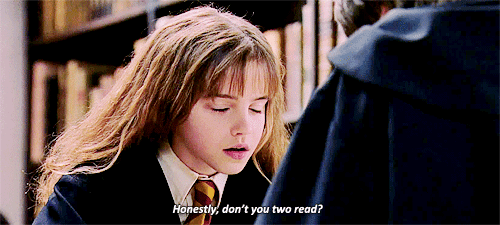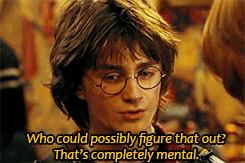Making Sense or Nonsense: J.K. Rowling’s Techniques and the “Crimes of Grindelwald” Reveal
SPOILERS AHEAD: PROCEED WITH CAUTION
Ezra Miller has spoken out about the big reveal of his character’s identity at the end of Fantastic Beasts: The Crimes of Grindelwald. He defended the shock value of the moment with a reference to J.K. Rowling’s tendency to drop baffling bombshells:
She knows the mythology so well and I think she’s into confounding you for a moment and having a fan go, ‘[W]ait, that can’t make sense!’ and then showing you how things you thought couldn’t make sense make sense. I think she enjoys people not getting it for a second. She’s done it to us a bunch of times.
I disagree with Ezra’s assessment somewhat. To me, Jo’s Harry Potter bombshells made perfect sense. They blew our minds for a moment, but things quickly fell into place. Often, we were able to predict them, but that didn’t make them any less satisfying. Jo weaved magical mysteries that were carefully intertwined. An initial reaction of “WHAT? HOW?” was immediately followed by “Oh, I see it now! Of course!” due to both explanations within the same book and an internal logic that allowed us to put the pieces together before a full explanation was even offered.
Take, for example, the introduction of Horcruxes in Harry Potter and the Half-Blood Prince. Here was a brand-new concept, a huge discovery about Voldemort, the key to defeating the villain that we could not have foreseen. And yet once Dumbledore explained them, Horcruxes did not feel like a deus ex machina, conveniently slipped in at the eleventh hour. They connected with everything: why Voldemort did not die when his curse rebounded, Tom Riddle’s diary from Harry Potter and the Chamber of Secrets, Dumbledore’s frequent disappearances and recent injury. The same goes for the Deathly Hallows, which perhaps received a little more backlash. Still, while the name and story were new, the objects had been there all along.
Harry Potter and the Prisoner of Azkaban is filled with major revelations about Harry’s past, but Remus and Sirius were able to explain how they all fit together, from Scabbers’/Peter’s missing toe/finger to the Fidelius Charm switch. The prophecy in Harry Potter and the Order of the Phoenix shed light on Voldemort, Harry, Neville, Trelawney, and Snape, rationalizing previously unexplained decisions and situations. What about Kreacher’s tale of Regulus Black and the locket Horcrux? The details of the story and Kreacher’s involvement were new, but most readers had guessed the identity of RAB already. “The Prince’s Tale,” revealing Snape’s feelings for Lily, further elucidated Snape’s motivations and actions. Harry as a Horcrux? Many of us saw it coming, but that didn’t make it less exciting, and it made complete sense with all of the information we had.
What makes the Credence reveal different is two things: 1) It was thrown in at the end of the film with no buildup or further explanation and 2) It goes against established history rather than fitting into it like a puzzle piece. For the first point, did anyone guess, either before going into the film or while watching it, that Credence was Dumbledore’s brother? Was that something that hawk-eyed viewers or readers of the screenplay had been able to deduce? Going back and revisiting, as we often did with the Harry Potter books, do we now see hints that seemed insignificant at the time but foreshadowed this reveal? I would argue that the answer to all of these questions is no.
For the second point, the Credence reveal appears to directly contradict the timeline we know. Rather than filling in a blank space that had been shrouded in mist or disentangling an inconsistency that had always been suspicious, it introduces a new enigma into a story that already received a Rita Skeeter exposé and a heartfelt confession from Dumbledore. It feels forced rather than neatly linked.
Jo’s Potter reveals were great because they didn’t rely purely on shock value but on satisfying connections. They didn’t feel like cheap tricks but well-plotted puzzles. Credence’s identity leaves us with more questions than answers and more contradictions than theories. Revelations should illuminate and uncover, but this one seems to push us further into the shadows. Jo raised a generation of sleuths who became experts at finding clues and solving cases. Her mysteries were difficult enough to make us feel intelligent and capable, even if pleasantly uncertain, not so convoluted as to make us feel lost or deceived.
Now, with no trail to follow, no evidence to analyze, and a long wait without any further details, it feels as though we are expected to put aside our detective skills and twiddle our thumbs until we are fed answers. Reading Harry Potter was an active pursuit that required us to make sense of things, whether beforehand or after the fact. Credence’s bombshell does not reward attention to detail or encourage us to investigate, but to blindly accept what’s been thrown at us. Despite Ezra’s analysis, this is not how Jo usually operates, and for this avid literary sleuth, it leaves a sense of disappointment and disconnection rather than exhilaration and engagement.



